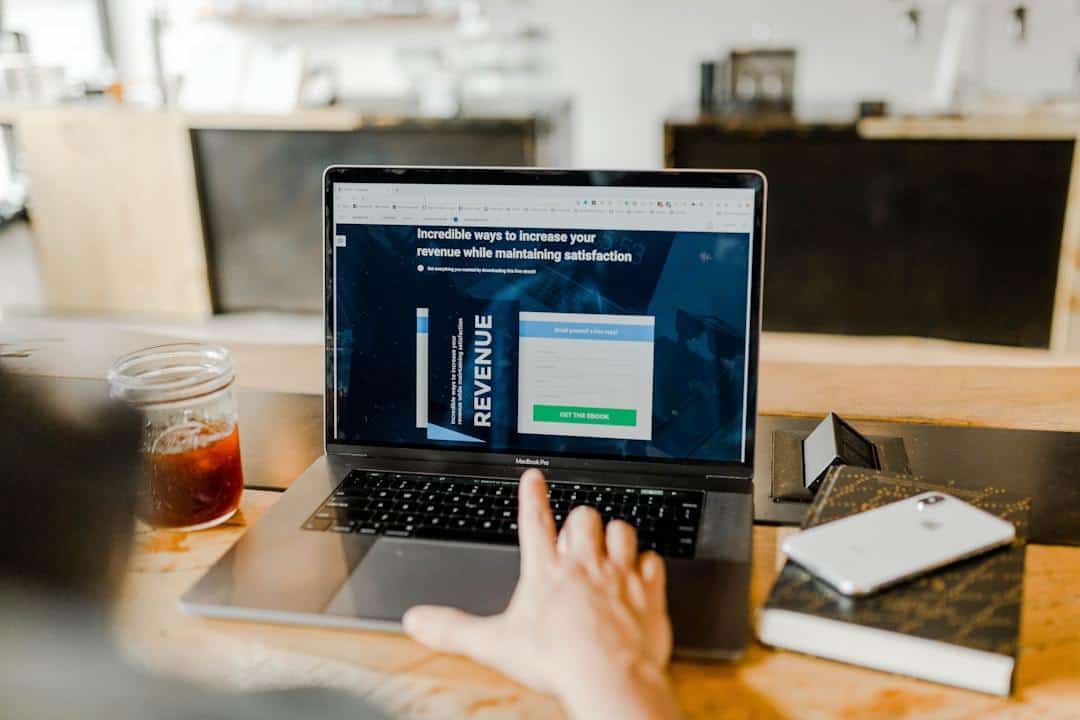Want to create a profitable online store without holding mountains of inventory? That’s the beauty of dropshipping! If you’re unsure where to start, you’re in the right place to start learning how to start dropshipping.
And why should you start dropshipping? The allure of dropshipping is hard to ignore; it promises a simple business model where you can sell goods online without the headache (and expense) of traditional inventory management.
This guide will teach you how to start dropshipping, whether you’re starting with little or no money, by diving into this accessible path to online entrepreneurship.
Understanding Dropshipping
As I’ve mentioned above, dropshipping flips the traditional retail model. Imagine yourself as the intermediary between a customer buying the latest gadget and a supplier ready to ship it. The customer places an order on your online store after finding your product listings.
You then purchase the product from your supplier at a lower price and have them ship it directly to the customer. Your profit?
The difference between your selling price and the supplier’s price minus your operating costs.
Pros and Cons of Dropshipping
Dropshipping has many advantages. It’s appealing to aspiring entrepreneurs because it has relatively low startup costs compared to traditional retail. This is because you don’t have to purchase inventory upfront.
Additionally, what I admire about dropshipping is it allows business owners flexibility. You can manage your business from anywhere with a WiFi connection—a perfect setup for digital nomads or if you want to travel like me.
This business structure can be highly scalable, too.
However, the convenience of dropshipping can also present some hurdles. With low startup costs often come lower profit margins.
Another is the competition is stiff, and you’re always at the mercy of your suppliers regarding things like inventory accuracy and shipping times. That’s why I encourage you check attention to your supplier’s terms and conditions.
How to Start Dropshipping to Boost Your Finances
Once you understand what dropshipping is, you can start the following:
Step 1: Choosing a Niche
You want a thriving dropshipping business? Picking a niche is the foundation of it—don’t go general as it’s not enough to sell a hodgepodge of items.
That’s because focusing on a particular market segment allows you to laser-focus your efforts, marketing strategies, and product offerings. It also helps build brand identity and target the right audience.
Moreover, a specific niche can help you easily navigate the often overwhelming world of eCommerce.
So, where do you begin when choosing a profitable dropshipping niche?
Explore your passions and interests: A genuine interest can be a huge motivator and lead to innovative ideas. For instance, I can turn my hobbies into a dropshipping business, whether it’s sports equipment, eco-friendly clothing, or tech gadgets, which might just be the sweet spot.
Utilize Keyword Research: Research trends and analyze competitor activities. By tapping into tools like Google Trends, Facebook Audience Insights, and Keywords Everywhere, you can gain valuable insights into market demand and product popularity. Pay close attention to search volume and how interest fluctuates.
Consider Underserved Demographics: Sometimes, the perfect niche product is hiding in plain sight. Could your dropshipping venture cater to specific demographics, perhaps the growing elderly population or the unique needs of LGBTQ+ consumers? You can use this as an opportunity to learn how to enhance customer experience for a particular product category.
Step 2: Sourcing Products
Next, you need to find reputable suppliers. Choosing a reliable dropshipping supplier is paramount when you start dropshipping; they can make or break your business.
Before launching headfirst into how to start dropshipping, we need to locate and vet potential suppliers. This involves comparing various dropshipping suppliers.
There are many choices, some more well-known than others.
AliExpress: This massive online retailer is like a gigantic virtual bazaar offering just about every product imaginable at wholesale prices.
Oberlo: While AliExpress lets you pick and choose products individually, Oberlo offers a seamless connection directly to your Shopify store, streamlining product importing, order fulfillment, and inventory syncing. Oberlo is one of the most common dropshipping apps.
SaleHoo: Similar to AliExpress but geared more towards wholesalers, this online platform provides dropshippers access to vetted, higher-quality suppliers primarily based in the U.S. and other reliable countries.
Wholesale2B: This platform simplifies finding and importing products from dropshipping suppliers across various categories directly into our dropshipping store.
You can even make and sell your own to make your business more personal and legit. You can start with print-on-demand ideas and other crafts out there.
Evaluate Your Potential All-Stars
Industry research underscores this point, with 84% of dropshipping merchants citing a reliable supplier as their top obstacle. And that’s no wonder because your supplier dictates the products you’re able to sell, influencing everything from product quality to customer service.
Thus, this isn’t something you want to gamble with.
So, before jumping into a partnership, ask these questions:
What’s their production and shipping speed like?
Do their shipping practices align with my business needs (domestic versus international)?
How do they handle damaged or lost goods and returns?
Does their communication style align with my business needs? Look at supplier ratings, reviews, and testimonials. Reach out directly to suppliers. Ordering product samples ensures they meet quality standards and helps you gauge shipping efficiency.
Build Long-Term Partnerships
Like all relationships, nurturing trust and transparent communication with your dropshipping supplier fosters success and smoother business operations. Once you find your perfect-fit supplier, consider striking up more personalized deals and arrangements.
For dropshippers serious about turning a profit, the consensus indicates aiming for a profit margin somewhere between 10% and 30%.
Want to boost your earnings?
Partnering directly with suppliers offers the potential to unlock wholesale pricing or preferential treatment.
It might seem counterintuitive, but once you start scaling, invite competing suppliers to bid against each other for your business. Leverage healthy competition to secure even better deals. This could involve volume discounts, expedited shipping rates, or other perks that bolster your profit margin.
Step 3: Choosing a Platform and Building Your Online Store
If you want to learn how to start dropshipping you’ll need an online store; it’s your virtual storefront, a platform that displays products and handles transactions.
Selecting the Best eCommerce Store Platform for Your Business
If I want my online store to succeed, I need a solid foundation. Thus, I’d choose the e-commerce platform that best suits my business needs. Each platform offers features and varies in cost and technical complexity.
Shopify: Its intuitive interface requires little to no technical know-how, making it extremely beginner-friendly. While Shopify charges a monthly subscription fee for its services (basic plans start around $29-$39), the convenience and robust feature set make it a popular choice among many dropshipping businesses. They offer various professionally designed themes to help you get started.
WooCommerce: For those familiar with the WordPress ecosystem, WooCommerce is a robust option. The plugin itself is free, giving you control over every aspect of your website’s design and functionality. Just remember to factor in expenses like web hosting (generally $10-$40 monthly). This approach provides customization but demands some technical knowledge.
BigCommerce: If you envision yourself working with an extensive catalog of products, BigCommerce is a strong contender. It provides high scalability for online stores handling a large number of transactions and makes managing products easier.
Design for Engagement
Having dropshipping websites isn’t just having an ecommerce store.
Customers aren’t likely to stick around for long on a clunky and confusing website, let alone click that ‘purchase’ button. Creating a user-friendly design is just as important as selecting the right product categories when learning how to start dropshipping successfully.
This involves selecting aesthetically pleasing and easy-to-navigate themes. Integrate high-quality product images accompanied by comprehensive information to capture and hold the visitor’s attention.
Customers need all the details necessary to hit the ‘add to cart’ button confidently.
Don’t be afraid to look at other thriving online stores for inspiration. Observe what competitors are doing and how they showcase their brand and borrow ideas that could translate well to your dropshipping niche.
Step 4: Stocking Your Virtual Shelves
Curate Your Product Offerings
Figuring out how to start dropshipping successfully hinges on a well-curated product list. Avoid listing products just for the sake of quantity—relevance is paramount.
Choosing a diverse but cohesive selection that appeals directly to your niche audience attracts a targeted customer base. It also fosters brand recognition and, hopefully, loyalty and minimizes the dreaded ‘shopping cart abandonment.’
Aligning your offerings with trending products or in high demand helps drive customers toward those virtual checkout lines.
Remember, however, that variety is essential. Too many identical items create direct price competition. That’s why consider selling unique products or those eligible for customization to set yourself apart.
Write Product Descriptions that Sell
Bland product descriptions won’t reel in customers, no matter how great your website is. Remember, in the world of dropshipping, these product pages become your brand ambassadors.
Think beyond listing basic features.
Instead, paint a picture with vivid language that captures the reader’s imagination, triggering an emotional connection with potential buyers.
If I were a buyer, I would want a clear outline of a product’s benefits. This would help me see myself benefiting from using your products. This includes highlighting practical features and specifications, evoking a sense of desire in the reader’s mind.
For instance, instead of just saying, ‘This lamp has three brightness settings,’ I’d choose to say, “Create the perfect ambiance with our touch-control lamp, featuring three distinct settings for reading, relaxation, or creating a warm glow for movie night.”
Set Strategic Prices
Striking a balance between competitive pricing and a profitable margin can make or break your dropshipping success story. While there’s no magic formula, some helpful tools simplify price analysis.
Competitor websites and product research provide a valuable starting point.
Once you’ve researched competitive pricing, calculate your profit margin, factoring in operational expenses like platform fees, marketing costs, and payment processing charges from companies such as PayPal and Payoneer.
When we examine these two payment options, in particular, we start to understand potential fees. PayPal fees can be 2.9% plus $0.30 for each transaction (higher for international transactions), and Payoneer credit card transactions incur a 3% charge.
Once those are factored in, adjust pricing for your chosen niche to find the perfect equilibrium between customer appeal and a healthy profit margin for your growing online empire.
Step 5: Mastering the Art of Marketing
Imagine spending hours perfecting your online store, crafting witty product descriptions, and then… crickets. No customers? That’s because simply having an online store doesn’t guarantee success.
Let’s find out how to start dropshipping by generating traffic and increasing sales through various proven marketing techniques.
SEO Fundamentals
Ever wonder how certain websites magically appear at the top of your search engine results? This is SEO (search engine optimization), and it can dramatically impact your online store’s visibility and customer reach.
Google processes over 99,000 search queries every single second—this highlights its immense influence on consumer behavior. That’s no wonder since most consumers choose to research a product online before visiting a brick-and-mortar business.
Mastering even the basics will go a long way. This means integrating relevant keywords naturally into your website content (product titles, descriptions, blog posts, and metadata like title tags and meta descriptions) so that potential customers can find your website.
Google offers a handy tool for free: Google Search Console.
Search Console is chock full of valuable information because it:
Provides insights into how your website appears in search results.
Highlights any crawling issues that need fixing (crawl ability directly impacts how search engines “see” and index your website).
Pinpointing areas ripe for improvement based on search analytics data.
Take Your Dropship Products on Social Media
Platforms such as Instagram, Facebook, and even TikTok present significant opportunities to promote your online store. Instagram and Pinterest thrive on visually engaging content. To maximize their impact, invest in high-quality product photos and videos.
Paid advertising helps accelerate growth but requires a well-thought-out strategy and budget considerations, too. With paid social media ads, targeting your specific demographic becomes laser-focused, allowing you to place captivating ads in front of an audience primed to become customers.
Build an Email List
Building an engaged email list can work wonders. Provide subscribers with valuable, personalized content, from special promotions to exclusive sneak peeks into upcoming product launches.
Doing so makes customers feel like a valued member of a community.
Engaging email campaigns helps boost customer retention rates and ultimately drive sales. This could involve exclusive content like behind-the-scenes glimpses of your operation or highlighting new dropshipping products relevant to a specific customer’s browsing history.
Step 6: How to Manage Your Business
Behind every seamless dropshipping operation is a well-oiled machine working hard behind the scenes. Let’s see what we need to learn about how to start dropshipping that ensures a smooth flow from purchase to satisfied customers.
Order Fulfillment
The true beauty of dropshipping is that each successful order is processed and fulfilled directly through the suppliers. This is fantastic, but understanding how each stage works ensures there aren’t any bumps along the way.
It all begins when a customer falls in love with a product on your site. Once the payment clears, you’ll receive confirmation from your chosen payment gateway.
That order information (like product details and shipping address) needs to be relayed directly to your dropshipping supplier.
From there, the supplier springs into action: picking, packing, and shipping the chosen products directly to the customer’s doorstep (or mailbox). While your role is hands-off in this fulfillment stage, ensure you have systems for order tracking. You’re the main point of contact if anything goes wrong. Keeping the customer in the loop every step of the way enhances their shopping experience, fostering trust in you and your dropshipping business.
Provide Excellent Customer Service
You might not handle the product, but excellent customer service falls squarely on your shoulders as the dropshipping merchant—after all, 70% of customers factor their purchasing decisions into their perception of that business.
Providing exemplary support that delights your clientele fosters a loyal following that spreads the good word (which can be more valuable than gold in a sea of digital marketing). This means responding promptly to questions, having a clear and concise return/refund policy easily located on your website, and resolving any issues that arise with products or orders.
For those who are ready to tackle scaling, outsourcing certain tasks to professionals who can provide that extra touch helps keep those customers content, and coming back for more.
Analyze for Optimal Performance
While learning how to start dropshipping can feel like stepping into the unknown, knowing what metrics are important keeps you sailing in the right direction.
Knowing what metrics can mean the difference between your dropshipping business becoming just another online store statistic and becoming a profitable example of e-commerce done right.
This is where analytics come in—and it’s far less daunting than you think.
Platforms like Shopify and Facebook offer robust, built-in analytics tools that offer insights on everything from website traffic to customer demographics and even pinpoint precisely what’s encouraging people to either purchase or abandon shopping carts.
Step 7: Applying Effective Strategies for Dropshipping Success
So you’ve mastered the basics and are ready to take things up a notch? You are well on your way to being a seasoned expert on how to start dropshipping.
Scale Your Dropshipping Business
Expanding your product line helps mitigate risk by diversifying product offerings and potentially attracting an entirely new wave of shoppers who just might not be able to find those same items elsewhere. The dropshipping world hinges on what’s trending and how effectively you ride the popularity wave.
Analyze what’s performing well using trusty sales and traffic analytics. This means phasing out items consistently lagging behind in the sales department, while simultaneously introducing new products that align perfectly with consumer interest.
It’s a strategic dance of staying agile while satisfying the ever-changing tastes of customers.
Optimize for Efficiency
Learning how to start dropshipping sometimes involves knowing when and what aspects of your business might benefit from external expertise. This frees up time for us to brainstorm the next big idea that keeps those sales rolling in.
As order volumes surge, manually inputting customer data becomes increasingly impossible.
Streamlining fulfillment through dropshipping automation tools helps simplify every facet of operations, from managing and syncing inventory and automating price updates to automatically sending order confirmation emails.
Explore New Horizons
Expansion presents a whole new playground for a thriving dropshipping venture whether you plan to sell trending eBay products or top Etsy products.
This often involves using multiple suppliers and selling channels, like expanding your business to online marketplaces like Amazon or eBay, or even creating your own website using a website builder.
However, ensure you understand those marketplaces thoroughly. They have their own fee structure and nuances, with eBay having international fees for eBay global sellers, which could impact your bottom line if unprepared.
FAQs
How can a beginner start dropshipping?
For beginners, starting a dropshipping business can feel overwhelming, but it doesn’t need to be. Begin by finding a profitable niche by researching popular trends.
From there, you can search for reliable suppliers, create your online storefront using a platform like Shopify, and select in-demand products for your store. Marketing plays a crucial role in reaching the right customers.
Experiment with free options like social media marketing and content marketing, or use paid methods like Facebook and Google Ads.
With some dedication and learning, even those new to e-commerce can find success with dropshipping.
Is $100 enough to start dropshipping?
While starting a business for $100 sounds like a dream, it’s a bit unrealistic. Although some say you can launch with as little as $100 to $500.
But keep in mind, that’s for a bare-bones business model, and realistically won’t cover everything.
You need to budget for expenses such as the eCommerce platform’s subscription (around $29/month for Shopify, which most beginner guides will recommend), potential marketing activities, or tools for social media scheduling (such as Hootsuite’s 30-day free trial), logo design, and even email marketing software (especially as you gain traction). However, compared to starting other types of businesses, it’s a far smaller amount.
How much does it cost to start dropshipping?
There’s no one-size-fits-all cost.
The costs associated with getting your business up and running vary wildly depending on various factors—your chosen niche, budget, eCommerce platform, the types of products you intend to offer, and the marketing approaches you employ all factor into the cost equation.
Typically, dropshippers allocate funds toward items like web hosting or platform subscription fees (Shopify, Wix, or Squarespace, for example), product sourcing apps like Spocket or DSers (monthly fees for higher tiers will give you more flexibility in sourcing products and additional features), a domain name, marketing initiatives (such as ads, or hiring freelancers for SEO services), and potentially outsourcing tasks.
Conclusion
Mastering how to start dropshipping hinges on several things; having an entrepreneurial spirit is a great place to begin.
Research plays a vital role. It’s about constantly adapting your strategies to a perpetually changing marketplace and keeping an eye on what competitors are doing well.
By meticulously researching what makes an ideal niche, identifying high-quality products customers crave (without the need for personal hoarding), and crafting a compelling brand identity gives us a solid foundation.
Designing a drool-worthy online storefront, diligently promoting products on social media, ensuring top-notch customer service for that vital, personalized touch (after all, nobody enjoys receiving the wrong-sized dog sweater), and leveraging insightful analytics to fine-tune operations, we put ourselves miles ahead of the curve.
As a dropshipper, you are both a visionary and a conductor orchestrating a network of products. You’ve got this.






